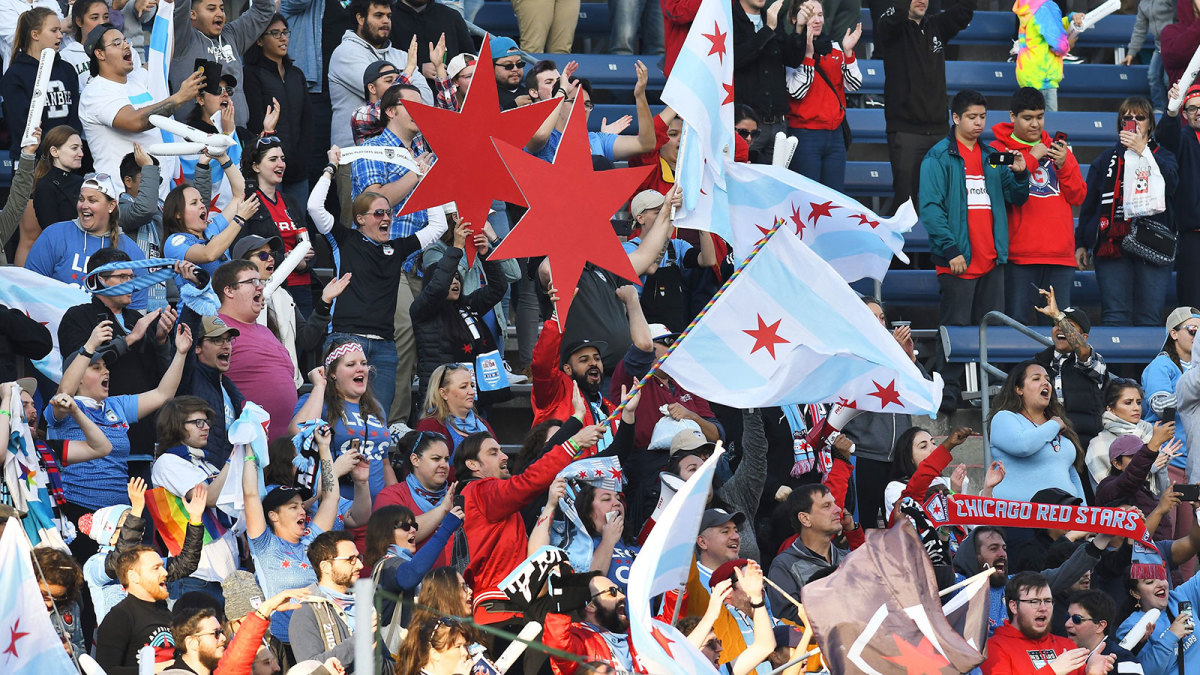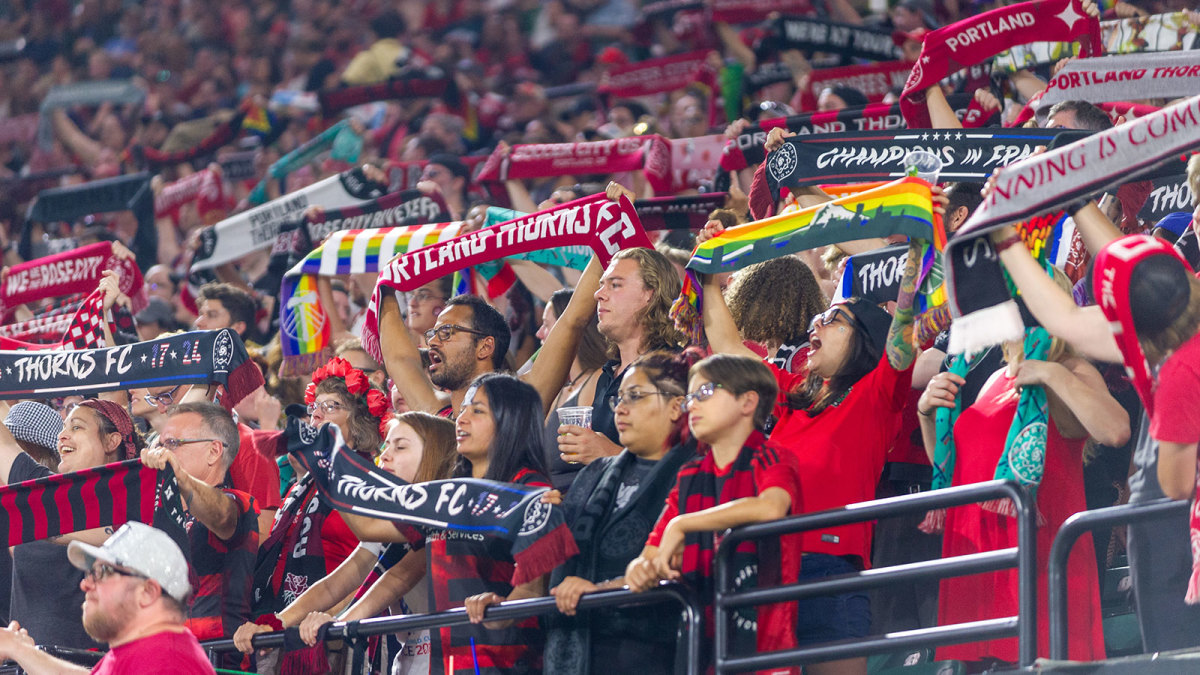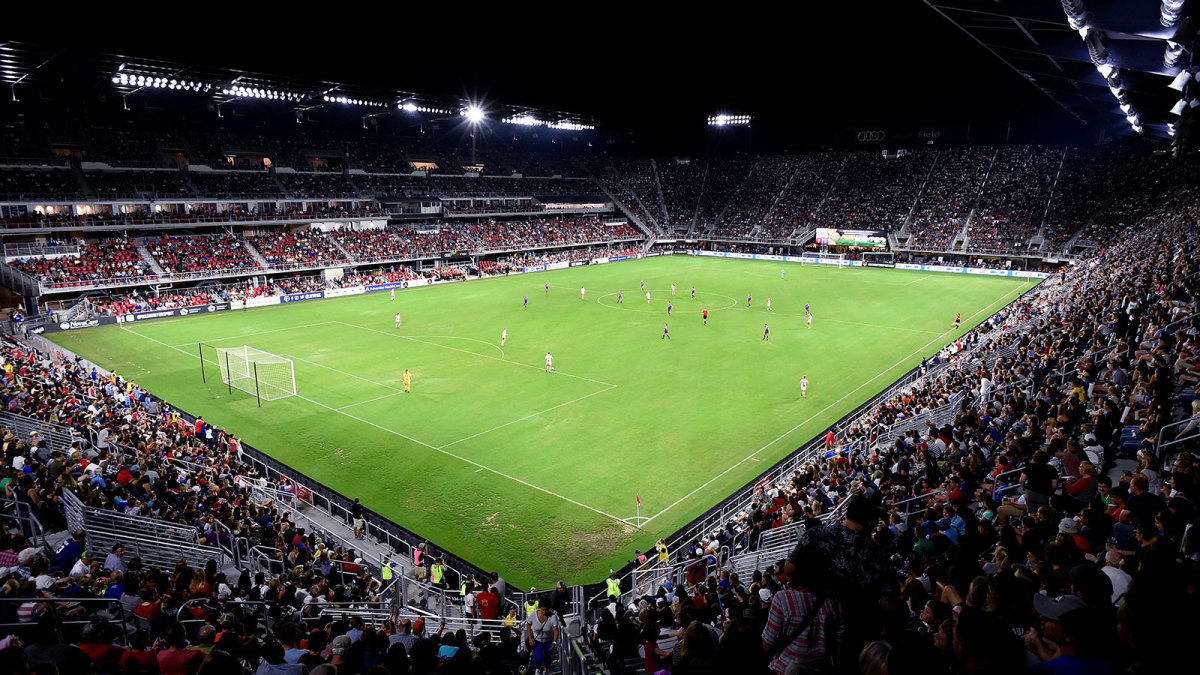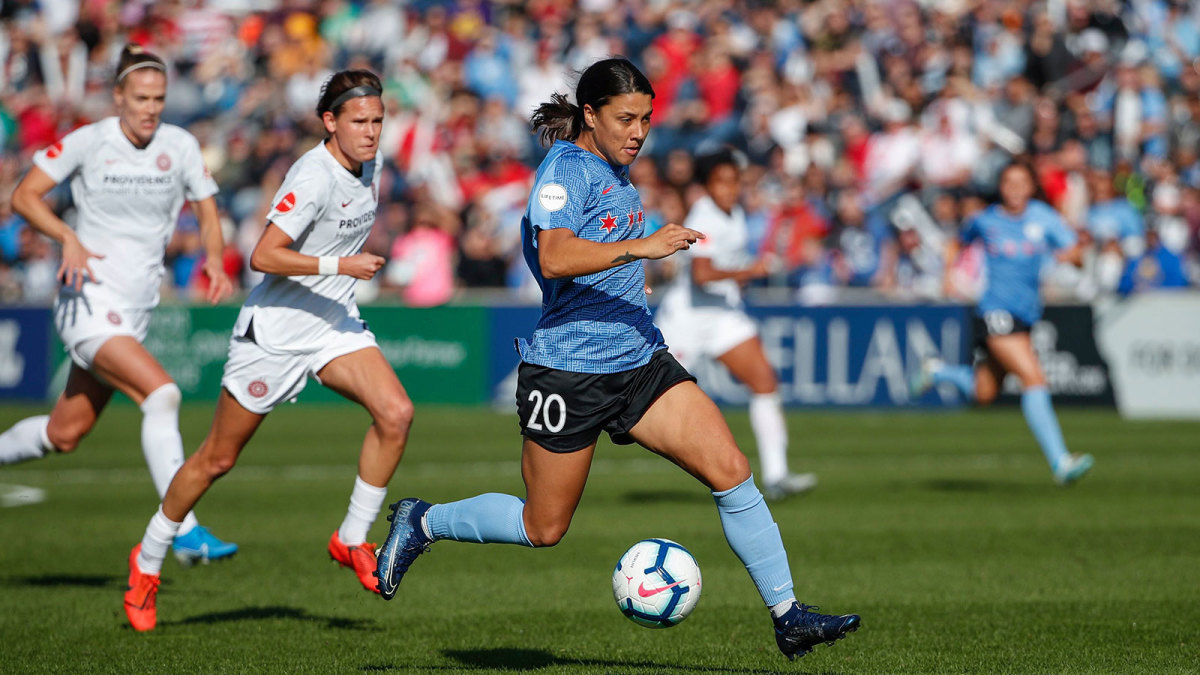What the Future Holds for NWSL–and U.S. Soccer's Involvement in the League

The NWSL will complete its seventh season this Sunday when the North Carolina Courage hosts the Chicago Red Stars in the league’s championship game (3:30 p.m. ET, ESPN), and at the end of a historic year for women’s soccer it’s a good time to ask: How will the NWSL, currently with nine teams, look in 2020? And what will the role of U.S. Soccer be?
Over the past week, I spoke to NWSL president Amanda Duffy and three league owners, Portland’s Merritt Paulson, Chicago’s Arnim Whisler and North Carolina’s Steve Malik. What emerged is a picture of a league that is appreciative of U.S. Soccer’s $18 million in support over the years, cautiously optimistic about transitioning from a federation-managed league to an owner-managed league with a commissioner in 2020 (though U.S. Soccer will still be involved) and bullish about growth in the number of teams (from nine to 10 next season), the salary cap, TV coverage and sponsorships.

“We’re going to look like we’re on rocket fuel next year after a couple years of sort of flatline movement,” Chicago’s Whisler said last Thursday. “Here’s what’s going to happen: We’re poised to announce some great expansion news. We have a long list of very good upgrades to our league that want to be part of what we’re doing and will propel us to a new television deal. There are a number of great new sponsor deals in the pipeline. From a commercial standpoint, we’re going to be in a very different place. And competitively, we’ll continue to upgrade our product and attract the best players in the world to the most competitive league in the world.”
The league already announced this week that Louisville will come on as an expansion team in 2021. But Duffy said the league expects to have 10 teams in 2020, which means another expansion announcement is coming soon. The most likely possibilities, sources said, are Sacramento and/or Atlanta, with additional interest coming from Cincinnati, Austin and LAFC for 2021 and ‘22.
“The goal is to get to a 14-team league and have every team in that league be pretty stable, so maybe you need more than five new teams to make that happen if there’s a team or two that decides it needs to move or something else,” said Paulson, whose Portland Thorns had an average home attendance of 20,098 this season and recorded a seven-figure profit to make it the most profitable women’s pro team in the world.

For his part, North Carolina’s Malik would like to have more than 14 teams eventually. “It’s a sport on the rise,” he said, “and while I don’t disagree that you have to get to 14 before you have 16, I think we’ve got a lot of potential, so I don’t know that 14 is enough.”
From a TV and sponsorship perspective, the league had some encouraging signs this season after suffering through some significant concerns. The early dissolution of its TV deal with A&E meant the 2019 season started without a national TV partner, but ESPN signed on after the World Cup for the rest of this season. With the NWSL’s digital deal with Yahoo Sports expiring, it seems like a good bet that the league will end up on ESPN’s digital and linear platforms in 2020. Meanwhile, a multi-year sponsorship deal with Budweiser was big—Soccer United Marketing brokered the arrangement and took no commission—and Nike extended its contract with the league as well.
This week, the NWSL announced it has hired Octagon to help value and sell its media rights and sponsorships.
“There’s big-time brand interest in being affiliated with the best women’s league in the world,” said Malik. “I think something happened this summer. It wasn’t just winning the World Cup, it was around what’s happened in our country culturally. There’s a lot of interest in affiliating with strong women. We’ve put in place a couple of partnerships that have extended our reach. You’ll see at the championship game another big name get involved.”
What’s clear this season is that NWSL teams other than Portland have shown gains in their local markets. The Washington Spirit and Sky Blue FC set single-game home attendance records by playing in MLS stadiums, and Reign FC addressed its venue issues by moving games from Seattle to Tacoma.

The same goes for Chicago.
“We’re setting our all-time attendance record and our all-time sponsorship sales record,” said Whisler. “We’ll have our highest revenues, and we’ll continue to manage costs, so we should be shrinking our losses.”
Whisler said his team’s losses this season will be at the low end of the league, a few hundred thousand dollars.
“The median in league losses is probably a million a year,” he added, “and some are significantly higher.”
What’s less clear right now is the exact role that U.S. Soccer will have in the league moving forward. The federation’s direct management of the NWSL will end this year, and the league office will grow in size under its first commissioner in three years, for whom a search process is underway. Duffy said she’s interested in the job, but she won’t be the only candidate.
“It’s a hard job,” said Malik. “I’d like to find somebody who can fly through the air, right? You’ve got to put on a lot of hats when you’re in that role. We’d like for them to have a love of the game and some perspective that would allow them to continue to have everybody align. It’s a challenging job for a commissioner to push us forward and bring everybody along.”
More details on U.S. Soccer’s continued involvement should come in December after the federation’s board meeting. Former USSF CEO Dan Flynn, who helped establish the NWSL in the first place, is working as a consultant on hammering out the details. The federation will continue to pay the club salaries of the USWNT players in the league through 2021 per U.S. Soccer’s collective bargaining agreement with the national team players. Sources said the federation will still be involved with the league, but it wants league owners to be on the same page and is concerned that some current owners don’t have high enough net worths to guarantee stability.
“It’s a pivotal time,” said Portland’s Paulson. “We are moving from a federation-managed league to an owner-managed league. There’s a lot of people who are critical of U.S. Soccer, but there is no way that we would be a going concern today if it wasn’t for U.S. Soccer and their active role in the NWSL. We owe our existence to them. Allowing the owners to manage themselves is a sign of growth and the fact that we’re more stable than we were at the outset. It’s probably the right thing from a governance standpoint that will let us be more aggressive in how we handle marketing and promotion and a number of other things. But we need to figure out a relationship with U.S. Soccer that is the right kind of partnership that will take us into the next phase of our growth. Because without it, I worry that we will regress.”
As Duffy said, “The relationship with U.S. Soccer has been critical to allowing the league to arrive at where it is today. While there is conversation about the relationship evolving, it’s a healthy relationship that we maintain with U.S. Soccer through this time.”

The transition will require that NWSL owners invest more money, including on player salaries. One of the league’s biggest concerns is losing Chicago goal-scoring sensation Sam Kerr, who has offers from European clubs that are worth much more than the $46,200 maximum salary this season for non-U.S. players.
How do you deal with the Kerr situation? Whisler, the owner of her Chicago team, had a quick answer.
“First, by changing what we’re allowed to do as a league,” he said. “We’re close to being able to finalize and announce a new compensation model that’s going to make us more competitive and keeps us the highest-paid professional league in the world with the highest median salary. We have the highest minimum, and we’re going to have to keep the pressure on the rest of the leagues by making sure our compensation is competitive.”
“Sam and her representative and I talk quite a bit, and we’re in the game financially with some of the new structures. At the end of the day, it’s going to be up to Sam, and she at some point is going to want to try Europe. But she’s a Chicagoan right now, and she loves Chicago, and we’re going to do all we can to keep her here. And the league won’t be in the way of doing that.”
